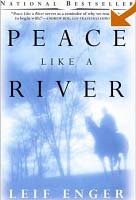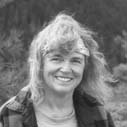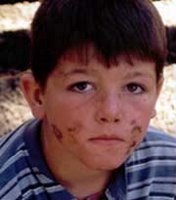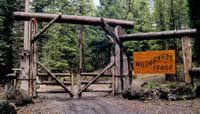Hoo boy! Tomorrow ended up being a couple days away. Sorry about that. Things are really cookin’ here.
Today we’ll talk about nonfiction. It’s pretty much a whole different ball game…at least in a lot of ways, but in other ways it’s pretty much the same.
It’s the same in that we still need to use good fiction techniques in creating intrigue and setting up good dialogue and scene.
It’s different in that we usually know the outcome from the get go, and we better know what we’re going to say or we will find ourselves in trouble.
In the early days of my writing I would end up at critique group asking them what they got out of my articles, because I was never quite sure what I was saying. No wonder my articles didn’t sell!
It isn’t enough to just have a good story when it comes to nonfiction. We need a good take-a-way as well.
Don’t know what a take-a-way is? It’s simply something that you want to leave your reader with, something that you want them to think about long after they’ve read the last word of your article or story.
Truth is, I’m not much better at outlining nonfiction than I am fiction. I still end up writing the outline AFTER I’ve written the article.
So, here’s how I start. I look for a good title and/or first paragraph. This is something I usually do in my head before I ever approach a computer or paper.
Let’s take a look at the first paragraph I wrote for my article on Ted Dekker:
He rode into town after sunset, catching the edges of a storm. Nearly a hundred of us lined up and waited at Evangel Bookstore in the Mall. Expecting thunder and lightning, we braced ourselves for a fright. After all, Ted Dekker produces thrillers that keep burley men awake at night while they turn the pages and jump at every sound. Instead, Ted offered the hand of friendship and answered every question as if we were all part of The Circle—that intimate group of friends who draw close and dive deeper into the heart of Elyon. If you don’t know what I’m talking about, pick up your own copy of Black, it will keep you on the edge of your seat and make your heart yearn for Heaven.
The entire paragraph was written in my head on the hour-long drive from the interview back to my home in the mountains. The beginning line was easy because it fit with the opening of House,
Ted’s most recent book.
The title, “Diving Deep With Ted Dekker,” was easy. I simply used Ted’s signature phrase, “Diving Deep.”

It also seemed appropriate to wrap the ending back to the beginning since “circle,” is another of the things Ted is known for. I had the ending early on:
Ted ended the evening by recognizing the circle emblem around the neck of Phil Lemons. “Circle brother,” Ted said. Then he invited all of us to join him on the internet: Teddekker.com. Fittingly, he joined hands with us in a circle and left with the parting words, “Dive deeper…on your journey through life, may you always dive deep.”
The rest was easy to write. It simply flowed from the bits and pieces of interview and research I had done. Once the research and interviews were completed, the rest was easy. BUT I spent hours on research and stuck around the booksigning for a couple of hours.
Let’s look at how to begin a book-length manuscript. Here is the first paragraph I ever had of Wild Women:
To the untrained eye we wild women may first appear to be a lonely, disheveled lot, but a deeper look reveals a soul full of countless treasures and camaraderie tighter than that of siblings. It's the call of the wild running deep in our blood, forming a special unbreakable bond with nature. I feel it whenever I hit the trail and smell the musky scent of game and wet earth; I savor it over open fires and far-seeing places; I dream of it on my bed at night when the rain makes music on the roof; and I treasure the memory of it when it's all over and I begin planning for the next adventure.
Wild is more than a physical untamed place; it's an unrestrained soul soaring on the wings of the wind.
I guess that’s really two paragraphs.
The title came to me long before the paragraphs, but I always knew it needed a subtitle. I went through several changes before I reached what I have now. If you’ve read my sample chapter of Wild Women, you also know that my first paragraph has changed.
Why is that?
The original first paragraph was aimed at outdoor women. I thought they were my target audience, but I have since changed my mind. The book was nearly published just like I had it, but the publishing team (after 30 days in committee) decided they weren’t sure if women were ready for such information in book form.
I wasn’t sure they were either.
So, I did a survey of outdoor women’s groups across America and Canada to see how many outdoor women there actually were. I discovered that there were a lot!
But did they read? It seemed like they were too adventurous to wanna take time to read.
 (Photo by my friend, Garret Harrington)
(Photo by my friend, Garret Harrington)
Then I started attending outdoor women’s events and was pleasantly surprised to find that most outdoor women carry a book in their backpacks. It makes sense, if you think about it. These women (including myself) don’t have time for TV, because we don’t usually sit still that long. But a book is perfect, because we can put it down and come back to it, so it never hinders the adventure.
So why did I change the paragraphs?
Because I still felt like I was missing the real point of Wild Women.
The answer didn’t come to me until I took two separate ten-day pack trips into the wilderness. Both times, I focused on Wild Women and asked God for direction. The second time I got it.
Wild Women isn’t just an adventure story…it’s a journey of the American west. It’s a coming-of-age story of an entire generation. Discovering that fact gave me an entirely different thrust. Instead of simply encouraging my readers in outdoor adventure, I am now offering a way to make some sense of their lives in the process of going for their dreams. My audience has now expanded to include city and urban women. My first paragraph says it all:
It’s always like this when I’m in the wilderness—the spiritual and physical meld into one. My vision quest has been filled, I’ve connected with the nighthawk, and I’ve slept under the stars every night. I came out here with questions, yearning to leave the hectic behind and make some sense of my life.
I’ve told the reader that I’m on an adventure, both physical and spiritual. I’ve set up the scene and I’ve hinted that we may find some answers to some questions and make some sense of our lives. And who hasn’t desired to leave the hectic?
Do I have all the answers at the start of the book?
No! I’m letting the book carry me along. I’m finding the answers as I go. So, now the writing of the book as become a journey to me, and if it’s interesting to me, I can count on it being interesting to my readers as well.
The last paragraph of the first chapter wraps up the questions and answers of the chapter:
I envision a laughing Creator, raising his voice to the clouds and covering himself with torrents of rain—a Creator very much in touch with His creation. Tresa and I dance our way out to the upper bluff and stand in full view of Devil’s Peak. A swirling, angry, red sky rises above it, but we are invincible, tucked away as we are in the palm of God’s hand. Our laughter echoes off the bluff, tumbling into the crevice below. The feeling of invincibility stays with us until all light falls from the heavens and we have no choice but to creep through the dark back to camp.
Tresa and I have discovered a way of overcoming fear and have experienced something beyond the ordinary, yet we can’t stay in that high. We have to come down and face the consequences of the storm in the dark of night. That leads me right into the next chapter, and the last paragraph of chapter two leads me into the next. It truly is an adventure of discovery.
Of course, not all writers write like this. And I don’t always either, but I have discovered that it is more my style than any other, and it most often works for me. So, in one sense I’m unearthing the story just as I do in fiction. Even though I know this story inside out, it has surprises for me. It takes me places I never thought I would go. Sometimes I have to stop and ask myself if I really want my readers knowing this much. It goes deeper, explores more territory than I had envisioned.
This kind of book cannot be written in fourteen days. It goes deeper than that.
Unlike my fiction story, I’m not absolutely sure of the ending. I have a vague idea, but I suspect it will change a lot before I actually get there. And that’s okay. I think the ending will be more real to my readers if we discover the answers together.
Right now I’m on chapter eight of my story. I’m thinking chapter nine will wrap up the first section of the book. And I think there will be three sections altogether. I kind of have a sense of timing and place for each section of the book but that may change as well. I’m pretty sure the book will start with a storm and end with a storm. But that may change too.
Goodness! You say. How can you write like that?
Ahhhhhhhh, how can I not? It’s me. It’s my style. And I love it.
I just finished a chapter where my house burned to the ground. Now, I’m looking at how that relates to the disaster of the terrorist attacks on September 11. I put myself in the scene, sitting by the campfire trying to make sense of it all, and I let the scene carry me.
Gotta have an outline you say? That’s okay. We all end up with one sooner or later. Here’s a great quote from an article I found:
Alice Klement said, “can mean any of the forms deeply embedded in readers' heads that say how a story is told, where meaning is carried, where patterns have a familiar ring. Good writers outline stories—beforehand or afterward—to ensure that they have good structure, or to understand their frailties.”
I agree!
Tomorrow we’ll talk more about how to use outline to FIX a story. And while we’re at it we’ll return to my thoughts about good versus evil in story. I think you will be surprised at some of the conclusions I’ve come to.
 Goodness! I’m so busy living life that it’s hard to get back here to share with you about all the amazing things I’m learning. I’m off to the coast for a photo shoot and time with The Cat Man, but I’ll cap a few things to whet your appetite for next week when I return.
Goodness! I’m so busy living life that it’s hard to get back here to share with you about all the amazing things I’m learning. I’m off to the coast for a photo shoot and time with The Cat Man, but I’ll cap a few things to whet your appetite for next week when I return.
 Second, I just returned from Colorado where I taught classes and met with fellow authors in one of the most beautiful settings in the world. The Rockies are breathtaking! From sunshine to tremendous storms . . . we had it all! Even a scare one night when lightning struck very close and the fire doors all slammed shut. Whew! We were very nearly evacuated. What wonderful makings for a novel!
Second, I just returned from Colorado where I taught classes and met with fellow authors in one of the most beautiful settings in the world. The Rockies are breathtaking! From sunshine to tremendous storms . . . we had it all! Even a scare one night when lightning struck very close and the fire doors all slammed shut. Whew! We were very nearly evacuated. What wonderful makings for a novel!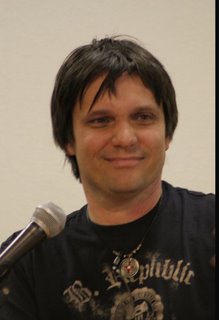 I stepped into Ted Dekker’s class and was totally surprised that he remembered me from his trip to Oregon! What a guy! I will share more about his message when I return as well. But the main thing he kept reiterating was to be true to your art and calling as a writer.
I stepped into Ted Dekker’s class and was totally surprised that he remembered me from his trip to Oregon! What a guy! I will share more about his message when I return as well. But the main thing he kept reiterating was to be true to your art and calling as a writer.